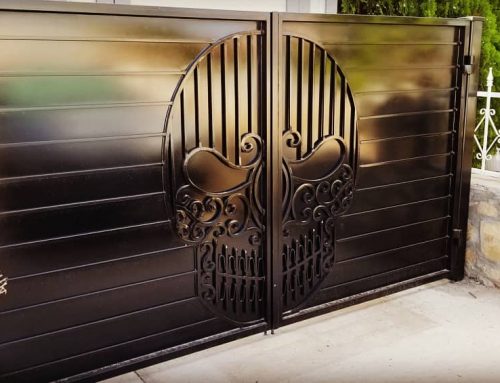So many aspects of our everyday reality are often overlooked. Yet they all have stories to tell. Architecture is especially good at storing history. People may unintentionally pass on what is happening in the world through the buildings and spaces they design. It’s why each era of architecture corresponds with movements and sentiments of history. If you look at the amazing history of wrought iron gates, you can see a pattern in the way this material has been used throughout history and how the different styles have gone through several different eras of design. We have discussed in previous posts, some history of wrought iron gates and how they have played a role in our buildings and structures. We thought we’d talk about an interesting story regarding one famous American university and its use of wrought iron on its campus.
The Long Life of Wrought Iron Gates
For many, gates are more than just structures that aid in security and delineating property. Gates also function as portals in both real life and the human imagination. It’s why from contemporary movies to classic works of literature, gates are often the representation of a portal or a demarcation that leads you from one place to another. Gates are an architectural structure that spans the entire globe. Gates guard Beijing’s Forbidden City, as well as Berlin’s Brandenburg Gate, as well as the eye-catching Gateway Arch in Saint Louis. In many great works of literature, the gates are a representation of the boundary between two worlds, good and evil, the living and the dead, and so on.
The Harvard Gates and the Grandeur that Wrought Iron Inspires
Most people are familiar with the prestigious Harvard University and the reputation it has built over its long history. It is, in fact, the oldest institution of higher learning in the United States and is located in Cambridge, Massachusetts. It began as an all-male training ground for Puritan ministers and grew into a sprawling institution of individual thinking and rigorous study. It is known as an institution of higher learning that offers students the opportunity to join a legacy of the nation’s elite thinkers. For those that have visited the buildings, they will likely notice that Harvard has an architectural history, as the entire campus elicits a sense of the historical. Not many people, on the other hand, will know about the wrought iron that surrounds Harvard and how that has a unique history all of its own.
How Wrought Iron Helps Build Harvard’s Unforgettable Architectural Legacy
There are 25 wrought iron gates that surround Harvard Yard and for the hundreds of students, faculty, and teachers that walk the yard every year, the wrought iron gates are part of the atmosphere that inspires them amongst the many other classical architectural characteristics of the college. Let’s take a look at a recent historic dive into the beauty of these wrought iron gates.
Blair Kamin wrote about the Harvard Yard wrought iron gates and describes how gates help funnel the flow of people and do so with a great level of artistry. Above the entrance at Harvard Yard is an inscription that reads “Enter to Grow in Wisdom.” In this sense, these gates are symbolic portals from ignorance to wisdom and knowledge and these architectural features inspire awe and inspiration.
Most of the gates were designed, he wrote, by McKim, Mead & White, a well-known architectural firm that embedded symbolic and decorative features into the gates. If you step closer, the gates have a cross that represents Harvard’s commitment to training ministers, wrought iron flowers, and leaves that suggest the pastoral beauty of the campus. McKim, Mead & White was important because they designed many iconic buildings in New England and would frequently embed unique characteristics and design elements into their wrought ironwork. For much of their work, including much of their Harvard work, they used Victorian Gothic and colonial Georgian-era styles.
The Craftsmanship is In the Details
For those that have observed the Harvard Yard gates a little closer, the details have only shown the true complexity of wrought ironwork. There is a gate in the Yard dedicated to Charles William Elliot, who was a long-standing president of the University. The gates have a small dedication to Elliot and his Pilgrim ancestors. One of the great things about wrought iron is the level of craftsmanship and detail that is possible. Inevitably, this adds incredible personality to a part of the architecture that has been around for centuries.
Add a New Dimension of Beauty to Your Home or Building
Just like the gates at Harvard Square turn the perimeter into a campus brimming with intellectual curiosity, passion, and tradition, you too can enhance your home or building with a beautiful wrought iron gate. There is a timeless quality to the work, perhaps because it has such a place in our history and imaginations, or because it is so practical, or maybe because it is composed of precious metals. Do something extraordinary with your property and add wrought iron gates. Want to know more? Call us today.





Leave A Comment